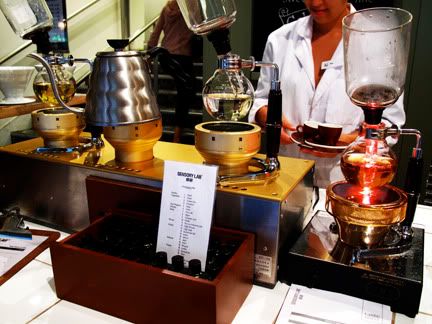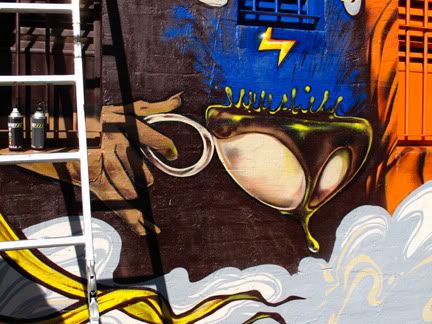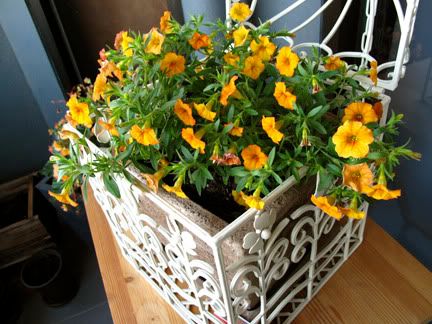Before I forget, here's our itinerary for the Cambodia trip.
Day 1:Flew into Siem Reap.
Checked into hotel near the Old Market.
Roamed Old Market.
Took a tuk tuk to Phnom Bakheng, an Angkor temple built on top of a hill, to watch the sunset. Unfortunately, the whole affair is a bit of a circus act. It was almost impossible to find a good standing spot (let alone, sit) to watch the sunset. The temple was jam-packed with tourists and there were hundreds of tuk tuk drivers parked and waiting at the bottom of the hill for their returning customers. It was almost a miracle that we manage to locate our tuk tuk driver amongst the many tuk tuk drivers.
Headed back to the city, had dinner, roamed around the night market and a massage. Cheap massages are a plentiful in the city (costing between USD$8 - USD$10)
The town wasn't as shabby and dead as people made it out to be. We actually had quite a blast in the little town. There were a few street bustling with restaurants and streetfood cafes catered for tourists. There are a couple of night markets around. Sure, you shouldn't expect a vibrant nightlife like Bangkok but it was definitely good enough for us.
*Tip: Your ticket allows you to enter the Angkor area for free the day before after 5 pm. For example, if you bought a one-day pass for Sunday, you are permitted to enter the Angkor area after 5 pm on Saturday*
Day 2: Rented bicycles, cycled to Angkor Wat (Small City). We really enjoyed our cycling experience. Bicycles are cheap to hire (USD$2 per day) and it's good exercise too. Another plus point is that you can roam the temples at your own pace without worrying about having no transport back or having the tuk tuk driver wait on you. A note of caution: you need to be relatively fit if you were to cycle to the temples. We probably cycled about 50km that day.
Angkor Wat is the largest and undoubtedly the most breahtaking of the monuments at Angkor and is widely believed to be the largest religious structure in the world. It is simply unique, a stunning blend of spirituality and symmetry, an enduring example of man's devotion to his gods. Relish the very first approach, as that spine-tickling moment when you emerge on the inner causeway will rarely be felt again. It is the best-preserved temple at Angkor, as it was never abandoned to the elements and repeat visits are rewarded with previously unnoticed details: Lonely Planet guidebook 2009.
We hired an unofficial local guide to take us around the temple. Our guided tour experience was an amusing one. We called it the "Slumdog millionaire syndrome". Do you remember the part in the movie where Jamil played tour guide to tourists at the Taj Mahal:
"The wife died in a car accident"
"I thought she died from child labour"
"Exactly sir, she died on the way to the hospital..."
Our tour guide's explanation wasn't exactly correct. I checked my guidebook a couple of times and found his explanations quite contradictory. We could have asked him whether pigs flew and he would have agreed with us to keep us happy. But it was all part of the fun. heh.
After spending a good three hours at Angkor Wat, we cycled to Angkor Thom (Big City). Angkor Thom was built in the late 1wth century and was one of the largest Khmer cities. The most photographed feature of this monumental construction would probably be its towers with four faces pointing in each of the cardinal directions.
Cycled back to the city.
Had dinner at one of the street food stalls.
Massage.
Day 3:Headed to the floating villages of Chong Kneas on Tonle Sap Lake. If you want a break from the temples, you should take an excursion to the villages. Everything there was literally floating = floating shops, floating homes, floating restaurants, floating schools. Imagine living on water your entire life! Mind you, it is quite touristy and you might get irritated by the local kids pestering you for money. You need to take a tuk tuk to the Phnom Krom dock and then hire a boat.
After that, we decided to continue our boat ride to the flooded forest of Kompong Phluk. We fell in love with the locals in this place. It's definitely not as touristy as the floating villages and managed to interact quite a fair bit with the locals. The friendly village is made up of houses that are built on bamboo stilts of about 6m to 7m high. It's definitely an interesting sight and I think, its worth the visit. O, you can also take a boat ride through the flooded mangroves.
Day 4:We headed back to the Angkor temples. The first temple we visited was Ta Prohm. This temple is definitely a must see! The temple has a msytical atmosphere about it because of the trees that have grown intertwined amoung the ruins. This temple was also intentionally left unrestored to retain that natural mystical feel. The popularity of this temple have been intensified ever since the film Tomb Raider (2001) was filmed here.
We then went to the East Mebon temple to watch the sunset. Even though this temple is packed with tourists during sunsets, it is still not overruned by tourists unlike Phnom Bakheng. I much prefer this temple for sunset viewing purposes. You can actually secure a place to sit here!
Headed back to the city, dinner.
Day 5We went for a quad bike tour. It was definitely a good experience for all of us. We rode through villages and paddy field. We also made a one-hour stop at an orphanage. The children there are extremely diligent, discipline and smart! A boy I met there picked up the english language only a year ago and his english vocab was already pretty vast. They learn about 3-4 languages in the orphanage including their own local language (Khmer), mandarin, japanese and english.
To book for a quad bike tour, visit www.quad-adventure-cambodia.com.
We checked out of our hotel and moved into the Meredian for our last night. It was a good and relaxing ending to our trip.
Day 6Relax in hotel. Enjoyed the complimentary buffet breakfast (yum!).
Checked out of hotel.
Adios!
Other tips:If you have time, you should go for an Aspara dance performance. Its approx. $10-$25 for the Old Cambodian dance performance plus buffet dinner.
You do not have to change your money to Cambodian Riel. Most people deal with USD in Cambodia.
You are expected to tip the locals for their services. USD$1 should be sufficient. (You Americans have spoilt the market!!!)




































